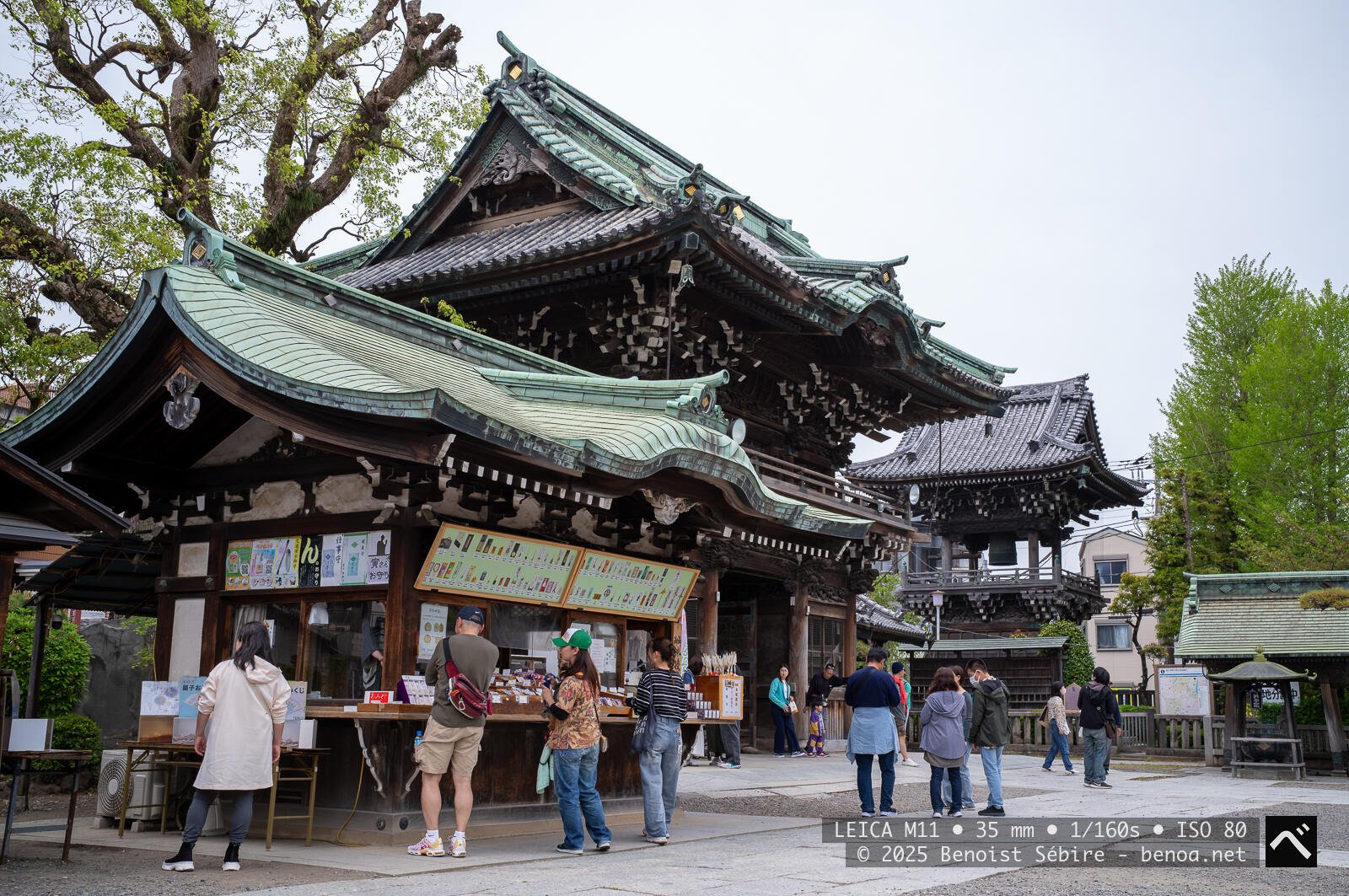Taishakuten

Taishakuten, formally known as Shibamata Taishakuten Daikyō-ji (柴又帝釈天題経寺), is a Buddhist temple in Tokyo’s Katsushika ward. It’s dedicated to Taishakuten (帝釈天), the Japanese name for Śakra (or Indra), a deity often seen as a guardian figure in Buddhist cosmology. The temple has been an anchor of the Shibamata (柴又) neighborhood since 1629 and is known for its distinct mix of spiritual presence and artistic detail.

The main hall has a strong presence. It’s a classic Edo-era structure with a broad roof, dark wood pillars, and intricate joinery. The scent of incense lingers in the air. Visitors ring the bell, clap hands, and bow—each action sharp and deliberate, part of a rhythm repeated for centuries. It’s not a massive complex, but it feels solid and still.

What makes Taishakuten (帝釈天) famous are the wooden carvings (彫刻) that line the outer walls of the main hall. These panels are masterpieces—three-dimensional scenes etched into wood with incredible depth and motion. They depict stories from the Lotus Sutra (法華経), with Bodhisattvas (菩薩), celestial beings, animals, and nature interwoven. There’s almost no blank space. Every inch is alive with curves, swirls, and expressions carved by master hands. The detail pulls you in—you’ll find people standing close, eyes tracing lines as if trying to read the wood itself.






Behind the hall is a Japanese stroll garden (回遊式庭園). It’s quiet, with a circular path leading around a koi pond, under maples (楓), past stone lanterns (石灯籠) and mossy rocks. It’s not flashy, but intentionally calm—every stone seems placed to balance the space. In spring, the trees blush with blossoms. In autumn, the leaves burn red. You can sit on the engawa (縁側) and watch the garden change with the seasons. It feels like a hidden pocket of peace.



